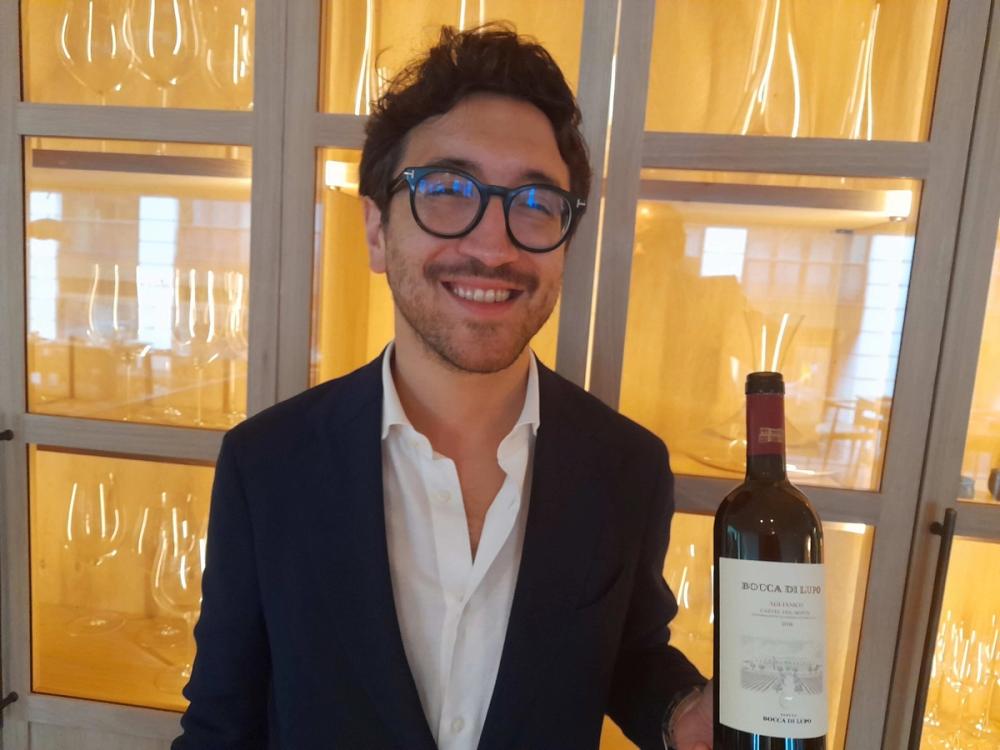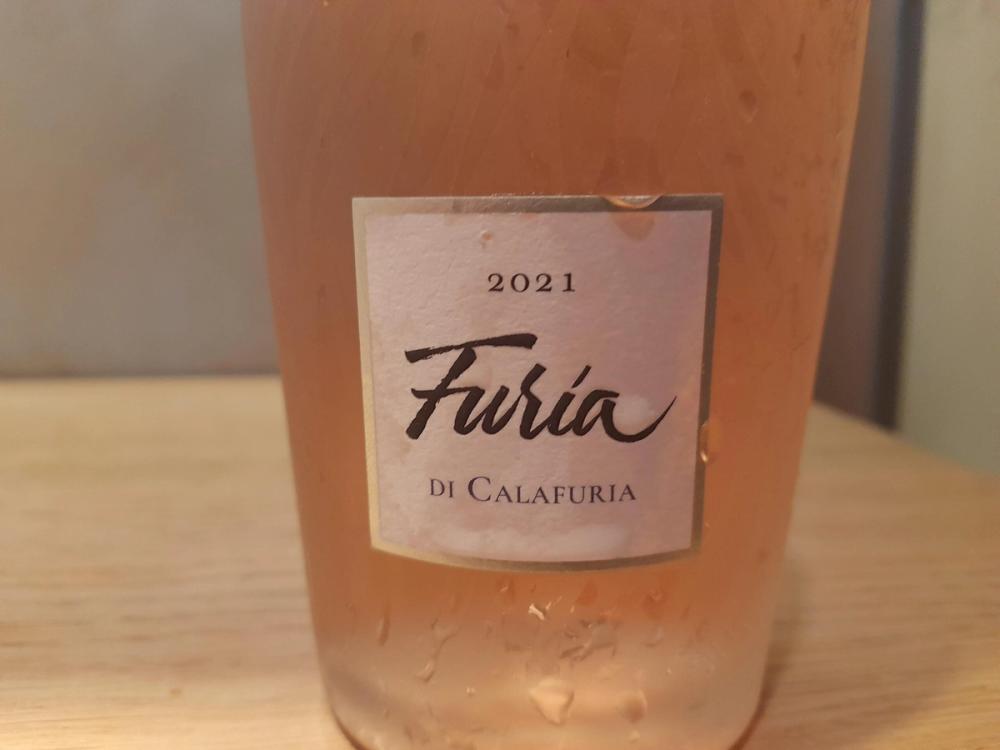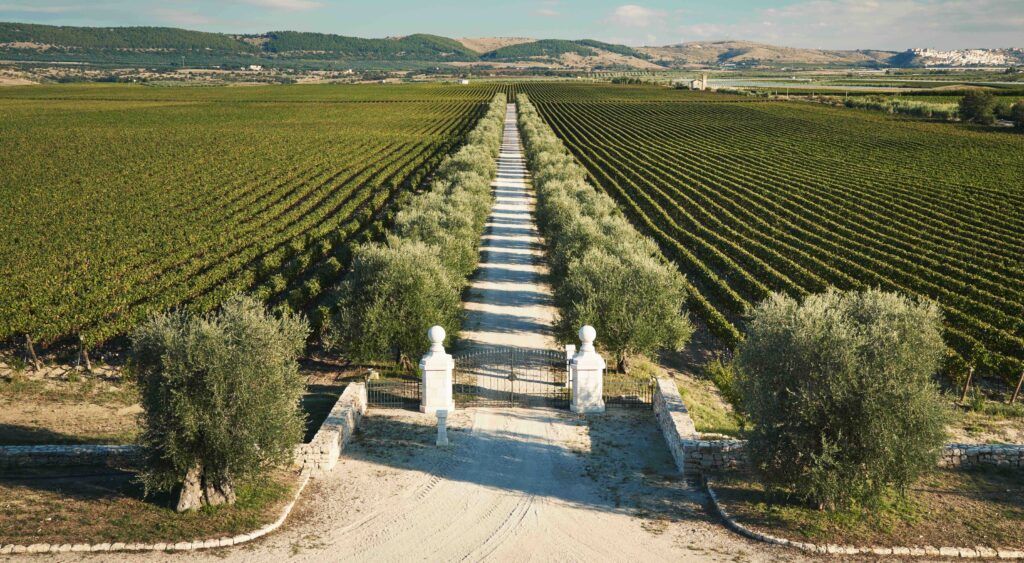“The Antinori family’s purchase of Bocca di Lupo was another case – maybe even the best – of redeeming marvellous terroir.”

Drinkers of Bocca di Lupo, the iconic Puglia brand owned by the Antinori family, will note a new label and logo on the latest release of their flagship Aglianico from the Castel del Monte DOC. A collection of UK-based sommeliers as well as The Buyer were invited to a London restaurant to taste the 2018 vintage at what was an official launch of Tenuta Bocca di Lupo’s “solo journey – its separation from its sister winery of Tormaresca.”
The two estates had previously been under the Tormaresca umbrella, sharing the same logo. Older vintages feature Tormaresca at the bottom of the main label, but the 2018 one does not, and has a new lupine logo. The explanation for the change, according to Emanuele Barrasso, the Antinori brand manager at its UK distributor, Berkmann Cellars, is “because Bocca di Lupo and Tormaresca produce wines which are different and, from a trade perspective, ‘speak’ to different clients.”
The invited trade were able to taste, over lunch, three vintages of the Bocca di Lupo Aglianico – 2006, 2014 and 2018. Also tasted were two other Bocca di Lupo labels – their Fiano 2018, Puglia IGT and Pietrabianca Chardonnay 2019, Castel del Monte DOC – as well as the Tormaresca Furia di Calafuria Rosato 2021, Salento IGT.

Vito Palumbo, brand manager for Bocca di Lupo, was keen to push Puglia’s merits as a multi-varietal wine-producing region. “We want to challenge the bias against Puglia,” he said. “To show we can make wines with freshness, acidity and balance. To put Puglia back on the map, and being recognised as somewhere where wines of quality and character are made. Our aim is to be considered as good as a region like Piemonte.”
Aglianico has, of course, earned the sobriquet of the ‘Barolo of the South’ on account of its high levels of tannin and acidity. Despite the former factor, the 2018 is already very approachable with soft, fine-grained tannins along with notes of chocolate, plum, spice and leather. “We want to give a silky finish to our tannins,” Palumbo continued. “Everything we do is to wear velvet gloves over an iron fist. So our fermentation temperature is a maximum 26C, and we take out the pips which we used to leave.” Whereas the 2006 saw 50% Hungarian oak, the 2014 and 2018 are matured in 100% French oak.
With Bocca di Lupo and Tormaresca between them producing three million bottles from 450 hectares under vine, Palumbo feels that the former’s Fiano label has an important role in pushing local identity. “We want to experiment with Fiano,” he added. “We leave it for ten months in big 500-litre oak vessels, of which 50% are new.” This oak regime helps to add structure to its full body and waxy texture. Appealing floral and almond notes made it a very pleasurable accompaniment to the Orkney scallops we ate it with.

Equally palatable was the premium-quality rose Furia di Calafuria 2021 with its light, Provencal-like colour. A blend of three grapes – Negro Amaro (50%), Cabernet Franc (30%) and Syrah (20%) – it retails at €30 in Italy. “Puglia is well-known for its rose, which is like a religion there,” Palumbo declared. “In fact, the first Italian rose in Italy was made in Puglia in 1946. We decided to make this Furia rose the same colour as those from Provence, so there was less than three hours of skin contact. It has some spiciness and creaminess from the Cabernet Franc, as well as a bit of salinity. It is incredibly popular in Puglia, which is why only 35% of the production is exported.”
The Antinori family’s purchase of Bocca di Lupo in 1998 was, as Piero Antinori wrote, “another case – maybe even the best – of redeeming marvellous terroir.” Very poor soils with sea fossils, unlike the rest of Puglia, which is largely limestone, underpinned his reasoning, and now more than two decades later, his renowned head winemaker, Renzo Cotarella, gives his take on the investment.
“I believe we have had excellent results in Puglia in terms of quality of wine but also as a major contributor to the reputation of the region. Now that we can celebrate Puglia’s renewed allure, we believe that the areas we invested in [Castel del Monte and Salento] deserve to be highlighted and appreciated for their character and distinctive identity. We want each estate to bask in its own glory.” On the basis of the London tasting in May, they have every right to do so.
































